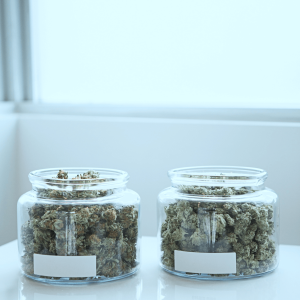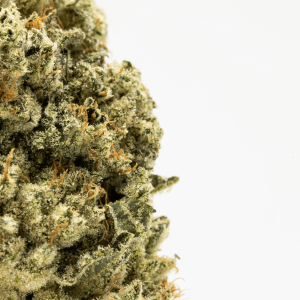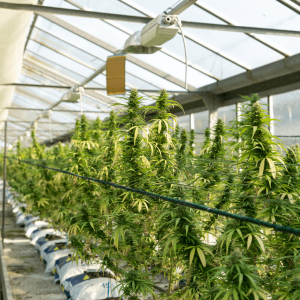So you’re wondering the age-old question… does weed go bad? So glad you asked.
As the cannabis industry continues to flourish and societal acceptance increases, understanding the intricacies of this plant becomes increasingly relevant.
One often overlooked aspect is the shelf life of cannabis, a topic often misunderstood, or worse — ignored.
Many users may be under the impression that weed, like wine, improves with age, while others worry that their stash will lose potency over time.
This blog aims to eliminate these myths and provide clarity on the actual shelf life of weed as well as its impact on potency and quality.
Factors Affecting the Shelf Life of Cannabis
Several key elements influence the longevity of weed, and understanding them can help you maximize the shelf life of your cannabis products.
- Humidity and Moisture Levels: The humidity in the storage area plays a significant role in preserving the quality of cannabis. Too much moisture can lead to moldy marijuana, while too little can dry out the cannabinoids and terpenes, impacting the potency and flavor.
- Temperature and Storage Conditions: Weed should be stored in a cool and dark location, ideally at a temperature below 70 degrees Fahrenheit. High temperatures can dry out your weed and degrade its quality over time.
- Exposure to Light: UV light from the sun is the most significant contributor to the degradation of cannabis. Protect your cannabis from light as much as possible to maintain its potency.
These factors do more than just impact the physical appearance of your cannabis. They can alter the chemical composition of your weed, degrading the THC into CBN, which results in a less potent high.
Does Weed Expire?
It’s a widespread myth that cannabis has an expiration date similar to that of food products or medications. Does weed go bad? Technically speaking, yes, but not in the traditional sense.
Unlike food or medication, cannabis doesn’t ‘expire.’ Instead, its potency and quality deteriorate over time, a process known as degradation rather than expiration.
Degradation in cannabis is fundamentally different from expiration. Expired products can become harmful or ineffective. On the other hand, degraded weed doesn’t necessarily become dangerous or entirely ineffective. Old weed just doesn’t provide the same level of potency or the same effects as when it was fresh.
The degradation of old cannabis involves changes in its potency and flavor profile. Over time, THC, the main psychoactive compound in marijuana, breaks down into CBN, a less psychoactive compound. Therefore, older weed might not get you as high as fresh flower.
Additionally, the terpenes, which contribute to a strain’s unique aroma and flavor, also degrade over time, leading to a change in flavor.
Signs Your Cannabis Has Gone Bad
Marijuana, like any organic product, is susceptible to spoilage over time. Identifying the telltale signs of spoiled or low-quality cannabis is critical to safeguard yourself from potential health risks.
Firstly, weed mold and mildew are clear indicators of compromised cannabis. They can appear as white, fuzzy spots on the plant matter’s surface, often accompanied by a uniquely unpleasant smell.
Do not smoke moldy weed! If you notice any growths similar to this, it’s best to discard the product immediately.
Secondly, another reliable sign is the presence of a distinct foul odor and taste. Freshly cured marijuana has a fresh, earthy aroma that is noticeably absent in spoiled weed. If your weed has a harsh, unpleasant taste, it’s a safe bet that it has gone bad.
Lastly, changes in color and texture can also indicate decay. Healthy cannabis flower tends to have a vibrant green color and a slightly sticky texture. If your stash has turned a brownish color and feels brittle to the touch, it’s likely past its prime.
It’s essential to inspect your weed carefully before consumption. Consuming spoiled cannabis not only diminishes the experience but could also lead to health complications. Always remember, when in doubt – throw it out!
Proper Cannabis Storage
Proper storage of cannabis is crucial to maintain its quality, potency, and freshness over time.
Neglecting to store your weed correctly can lead to a dry, harsh smoke or, worse, to moldy old weed buds.
Here are some recommendations that will help you maximize the ‘expiration’ date of your weed.
Airtight Container
One of the best ways to store your weed is in containers with an airtight lid. These can be glass mason jars or specialized cannabis storage containers with a built-in humidity control system.
Using a sealed container rather than plastic baggies, for example, will protect your weed from air exposure, which can lead to the degradation of THC and dry out the buds, making them less enjoyable to consume.

Ideal Temperature and Humidity Levels
Cannabis is best stored at a temperature between 60 and 70 degrees Fahrenheit, with no open air and a relative humidity level between 59% and 63%. These conditions effectively prevent mold growth and preserve the terpene profile of your weed, ensuring it stays flavorful and potent.
Avoiding Exposure to Direct Sunlight
Direct and prolonged exposure to light, especially direct sunlight, can degrade cannabinoids and terpenes in cannabis. This is why it’s recommended to store your cannabis in a cool, dark place. If you need to store it in a place that receives some direct light though, consider using a dark glass container or a specialized cannabis storage container that blocks UV rays.
Extending the Shelf Life of Weed
Preserving the freshness and potency of the cannabis flower is achieved through a variety of methods.
- Vacuum sealing provides an effective solution. By removing the excess oxygen around the cannabis, vacuum-sealing not only prevents moisture and mold growth but also protects the product from harsh external environments caused by too much oxygen.
- A Boveda humidity control pack is another popular method for maintaining cannabis freshness. These packs help to maintain optimal humidity levels, preventing the cannabis from drying up or becoming too moist due to too much humidity. Ask your local dispensary if they include Boveda packs in their flower jars.
- When it comes to refrigeration vs. freezer storage, it’s important to understand that while refrigeration can help slow the degradation process, freezing temperatures may cause the delicate trichomes, or crystal-like hairs seen on the surface of marijuana flower, to become brittle and break off.

Tips for Revitalizing Slightly Dry Weed
If your cannabis has become slightly dry, don’t stress! There are a few ways to bring it back to life. Firstly, store it with a humidity pack, which can rehydrate the buds over a couple of days.
Alternatively, you could place a small piece of lettuce or an orange peel in with the cannabis. These items will help add moisture back into the marijuana buds, revitalizing their quality. Remember to monitor carefully to avoid any mold spores and mildew.

Potential Health Risks Associated with Consuming Expired or Poorly Stored Cannabis
While cannabis itself doesn’t have an expiration date, the quality and safety of the cannabis product itself can be compromised if not stored properly or if it’s kept for an extended period.
Poor storage conditions, particularly exposure to light, heat, and humidity, can degrade the cannabinoids and terpenes in cannabis, impacting its potency and flavor.
Additionally, improperly stored weed may develop mold or bacteria, which can pose serious health risks if consumed. Moldy weed may result in respiratory problems including lung infections, or even food poisoning.
The Environmental Impact
Not only does proper storage allow your weed to stay fresh, but it plays a pivotal role in reducing waste and reducing the environmental impact of cannabis consumption.
When marijuana is stored incorrectly, it can degrade quickly, leading to waste. This wastage not only results in financial loss but also contributes to an increase in environmental waste.
Additionally, the manufacturing process of cannabis packaging also plays a significant part in its environmental footprint, which can be lessened by reducing waste through proper storage.
On a broader scale, it’s essential to encourage sustainable practices within the whole cannabis community.
Consumers, growers, and retailers alike can all play a part in nurturing a more sustainable industry for medical marijuana. This can include initiatives such as recycling programs for marijuana packaging, promoting organic cultivation methods, and advocating for energy-efficient growing operations.

Conclusion
In conclusion, keeping your weed fresh is pivotal to maintaining its quality and potency.
The key takeaways suggest that when stored properly under optimal conditions – cool, dry, dark place – weed can remain effective and safe to consume for six months to one year.
Over time, as weed expires, however, its potency inevitably diminishes. That’s why adhering to proper storage methods is essential in order to ensure you are getting the most out of your cannabis product.
It’s also essential to exercise quality control by avoiding using old marijuana or poorly stored weed, which can lead to a bad or potentially harmful experience.
Ultimately, the goal is to promote well-informed and responsible cannabis consumption. Always stay educated about your products, their storage requirements, and their shelf life, and you’ll be able to enjoy the benefits of weed safely and effectively.
Frequently Asked Questions
1. What happens if you use expired weed?
When cannabis flower is past its prime, it doesn’t become dangerous or toxic to consume but rather loses its potency and flavor. The plant matter and active compounds, known as cannabinoids, degrade over time, diminishing the psychoactive effects. Likewise, the aromatic terpenes that lend cannabis oil its distinctive scent may dissipate, altering the taste and smell. While not necessarily harmful, one might experience a less satisfying or potent experience from expired marijuana.
2. How long does weed last expiration?
The longevity of weed depends on multiple factors, including the quality of the cannabis, storage conditions, and the method in which it’s stored. Generally, properly stored weed can last anywhere from 6 months to a year before beginning to degrade in quality.
However, it’s important to note that while old cannabis may not necessarily “expire” in the traditional sense, its psychoactive effects may diminish over time due to the degradation of cannabinoids such as THC.
3. Does weed expire after 3 years?
Weed doesn’t ‘expire’ in the traditional sense, but it can degrade and lose its potency over time due to factors like light, temperature, and humidity. Generally, if properly stored in a cool, dark, and dry place, fresh weed can maintain its potency for up to 1 year.
Beyond this point, while it won’t become harmful or dangerous to consume, the quality and effectiveness can significantly decrease. Therefore, it’s safe to say that after 3 years, your weed might not offer the desired effects.
4. What does bad weed look like?
Bad weed has a few telltale signs. It generally appears brown or dull green, lacking the vibrant, rich hues seen in quality cannabis.
Bad weed is often dry and brittle, crumbling easily when handled. It may also have excessive seeds and stems, which are typically removed from high-quality weed products first.
Finally, poor-quality weed might have a musty or unpleasant odor, a stark contrast to the fresh, herbal scent of good cannabis.

 Rewards
Rewards




